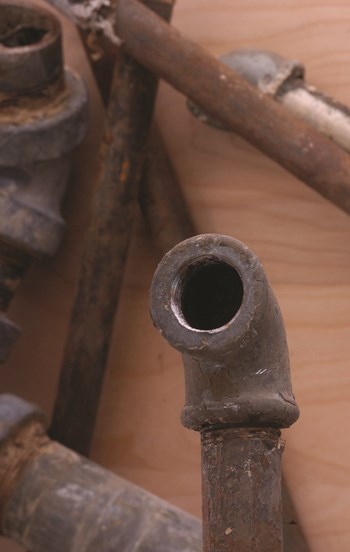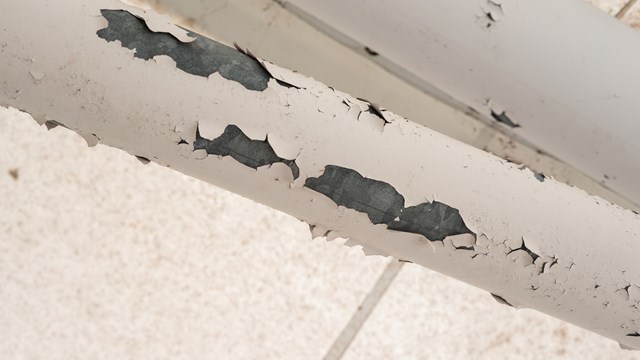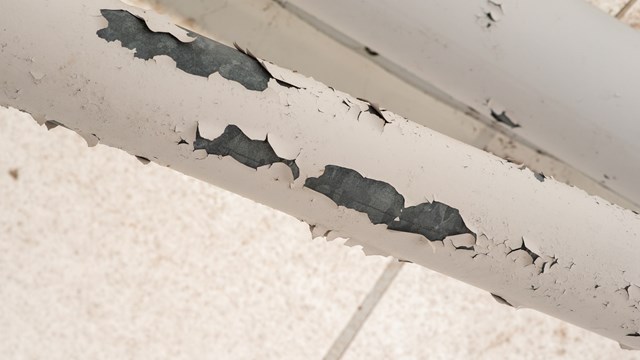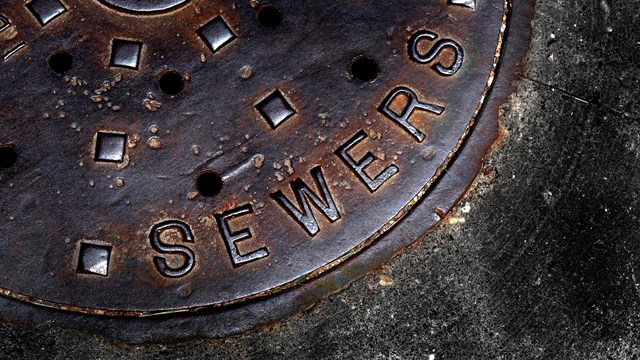
While Flint, Michigan may have been the highest profile case of water being contaminated with lead in recent years, lead is an issue that water systems across the country have to navigate and monitor closely.
Earlier in the year, there were elevated lead levels found in New Jersey’s largest public school district in Newark, according to NJ.com. Twenty-six public schools in Chicago were found to have dangerous levels of lead this year, according to DNAinfo Chicago, and according to Florida Today, almost 50,000 people were potentially exposed to unsafe lead levels in drinking water between January 2012 and June 2015. And, after the news about Flint, some Long Island schools reportedly tested positive for higher than normal levels of lead, according to an NBC New York News report, and officials there began remediation efforts.
Despite all of that, lead in the water system isn’t something that most people tend to think or even worry about during their day to day lives.
Piping Up
Part of the reason for that is because local municipalities and water companies go to great lengths to make sure that the water is not only safe, but will remain so as it travels through the pipes and into our homes—no matter what those pipes are made of.
In fact, New York City water is considered one of the safest water systems in the country due to its expansive system of aqueducts and the fact that water from the Catskills Mountains is of excellent quality.
That’s not to say contamination cannot occur once it gets into pipes that supply individual buildings, schools and homes.
Phil Kraus, president and chief executive officer of Manhattan-based Fred Smith Plumbing & Heating, concurs. “In some of the older buildings there are lead water service lines coming into the building from the street. Therefore, there is a chance that there could be dissolved lead in the water as it enters the building,” says Kraus. “There’s almost no lead water piping inside the building past the water service piping.”
In order to determine whether you have a lead water service pipe, you need to perform a physical on-site inspection, he says.
According to the New York City Department of Environmental Protection (DEP), elevated levels of lead were found in water samples at some homes containing lead service lines. New York City has an aging infrastructure, with many buildings in excess of 100 years old, so homes built before 1981 may still have lead service lines. Additionally, internal fixtures and plumbing installed before 1987 may contain lead solder, and cause corrosion which could leach into the water supply.
And it’s not just in older buildings where you might have a concern, says Kraus. “A lot of newer buildings,” he notes, “installed copper pipe with solder joints that contained much higher levels of lead than the levels permitted by today’s standards. Recently, the federal and state governmental agencies stopped the use of certain solders which they considered to have excessive lead content.” Also the agencies have mandated reduction of lead in brass valves and fittings as well.
If you are concerned about dissolved lead in your water, water testing with a certified lab should be performed.
“If they look at the water chemistry, they can add something that helps maintain the scale that's built up on the inside of lead pipes, typically it is going to be orthophosphate, to keep the lead from dissolving into the water,” says Greg Kail, the director of communications at the American Water Works Association, a non-profit focused managing and treating water.
Part of why water is treated is for corrosion control, to ensure that even if water passes through lead pipes it won’t leach lead from the pipes and contaminate the water. The substance often used, orthophosphate, creates a coating on the inside of pipes to prevent corrosion. Part of what went wrong in Flint, according to a study by the Natural Resources Defense Council (NRDC), is a lack of corrosion control.
“There can be times during a community's growth or based upon environmental factors that they need to change their water source or add to it. In all those cases, the water professionals at the treatment plant need to look at what impacts that those changes are going to have on their water quality, whether it be how it impacts corrosion or if it requires a different treatment, and there are often unintended consequences that the utility has to prepare for, model and eliminate before putting that new water source online,” says Kail.
So when Flint changed water sources, according to the NRDC study, corrosive water leached lead from the pipes and damaged the protective film that had built up.
Where is the Lead?
“The problems with lead occur in really two main sources, one is home plumbing, lead solders, some brass fixtures, wherever lead might have been used inside the home. And then the other potential source is if the home or business has a lead service line leading to it, and we did a study to look at that. Based on our best estimate, there are about 6.1 million lead service lines in the United States that remain out there. So there's been some progress made over the decades, but there's still a lot to go. The first and best protection is to remove those potential sources of exposure. Now, some people don't know if they have a lead service line or if they have lead in the home. They can do something; they can certainly contact the water utility,” says Kail.
Those service lines Kail mentions are the lines that connect buildings, be they private homes or businesses to large condominium or co-op associations, to the water mains running under the streets. If there’s going to be a problem, like there was in Flint, that’s likely where it’s going to be.
“Lead pipes were outlawed in 1986 but it's very difficult for the water system to know what has been done, what work's been done on particular properties, so in many cases, their knowledge of the situation is going to be incomplete, at best,” says Kail.
That’s not to say there aren’t other places lead can find its way into the water system—lead solder, brass fixtures, maybe an older building still has some lead pipes—but due to changes in the law since the late ‘80s the service lines are most likely to be the culprit as they aren’t often worked on. The pipes can often be spotted by sight alone.
There is something called a scratch test you can do to see if a line is lead. If you take your house key, or even a quarter, and it scratches the pipe you should probably call a plumber. While a scratch test is an option, a visual inspection is more than enough given lead’s unique physical characteristics.
Of course, the board of your building doesn’t need to appoint a specific officer to go check the pipes around the building or the service line in the basement. While the board should take responsibility and make sure there are no lead pipes, anyone can check to be sure.
What Can Happen
“There is no safe level of lead exposure. EPA has established a health-based maximum contaminant level goal for lead of 0. Lead exposure is of particular concern for children under 6, because their growing bodies absorb a larger portion of the lead to which they're exposed, and because their developing brains and nervous systems are more sensitive to lead. Exposure of pregnant women to lead can adversely affect both the mother and the infant, and lead is also harmful to adults,” says Monica Lee, the Environmental Protection Agency’s deputy press secretary.
In adults, lead poisoning has been linked too, in addition to death, according to the EPA, cardiovascular effects, increased blood pressure and incidence of hypertension, decreased kidney function and reproductive problems in both men and women. In pregnant women lead poisoning can result in serious effects including reduced growth of the fetus and premature birth. Children are susceptible to even low levels of lead and may suffer from anemia, hearing problems, slowed growth, hyperactivity and learning problems.
As a result of this, “Congress, in the Safe Drinking Water Act, directed that EPA establish treatment techniques to prevent adverse health effects to the extent feasible. EPA developed a lead action level for drinking water of 15 parts per billion, based on an evaluation of the feasible level of lead in drinking water in homes with leaded plumbing materials that receive non-corrosive water,” says Lee.
In addition, she notes, “If 10 percent of the tap samples collected in accordance with the Lead and Copper Rule exceed the action level of 15 ppb, then water systems must take additional steps such as public education and lead service line replacement to reduce drinking water lead exposure. The rule is intended to minimize risks to public health but does not eliminate them.”
Replacing Pipes and Testing Water
If you do an inspection and happen to find a lead service line, or other lead pipes, in the building don’t panic. There are tests that can be done to determine if they are leaching lead and contaminating the building’s water supply.
“I'd encourage them to be in contact with their utility to have that water tested at the tap. Again water coming from the treatment plant is not going to contain lead in significant amounts, so that's what makes it different. The utility can sample in a community and that sampling is intended to check to see if their corrosion control is effective, but it can't guarantee in every case that a customer doesn't have a problem,” says Kail.
According to the EPA you can also get in contact with a lab, found in the yellow pages under ‘laboratory,’ and have them test as well. Experts say that just because there are lead pipes doesn’t mean that there's lead particles getting in your water that could poison you. The best defense is to get the water tested and remediated if there is a problem. If you do find your service line, or any other pipes, are lead then you should go about getting it replaced.
“I say the best way to bring in the most confidence is to remove those sources of lead exposure, which may not always be a cheap fix,” says Kail. “In most cases, the utility would own part of a service line, the customer would own part, so there'd need to be some discussion of what could be done to remove the customer's side. Some utilities have payment plans, there are some communities that have affordability programs,” he says.
Kraus agrees and says that in some cases it would be prohibitively expensive to remove piping, especially if it’s inside the walls.
So while the utility will do what it can to ensure that the water coming in through your pipes is safe, there’s more that everyone can do to decrease the risk of exposure.
Another way to ensure lead-free drinking water is to filter the water at the point of use, says Kraus. Fred Smith Plumbing & Heating is the exclusive distributor of Culligan Water Filtration systems in New York City. These filtration systems can remove lead as well as other potential contaminants at the tap. A good drinking water filter system ranges from $850 to about $1,650 installed. However, all water should be tested for lead and any other possible contaminants.
“We do that as a society for lead paint and dust, but we haven't been as active with lead service lines. Part of that is certainly because it's not as common a source of exposure. But when you're looking at the overall exposure that a person can receive, it's certainly part of, I think everyone agrees that rather than only communicating about it when there is some exceedance of the lead and copper rule, it should become a more regular part of our utility and community communications,” says Kail.
John Zurz is a staff writer at The Cooperator and other publications. Managing Editor Debra A. Estock contributed to this article.






Comments
Leave a Comment